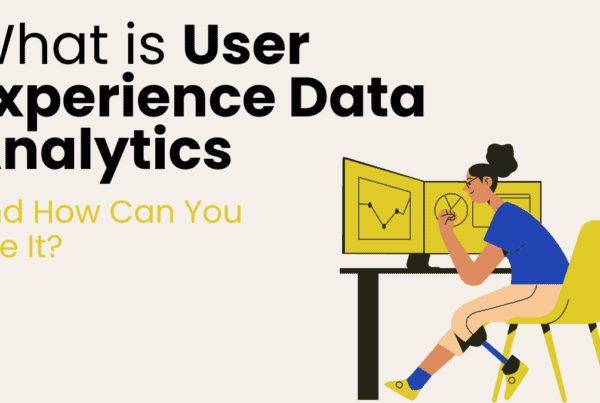
Single-use plastics are plastic products that are designed to be used once and then discarded. These items are generally not meant to be reused or recycled, causing significant environmental concerns due to their persistence in the environment. Examples of single-use plastics include plastic bags, straws, coffee stirrers, soda and water bottles, and most food packaging.
Single-use plastics are causing a big problem for our planet. They’re cheap and handy, but they’re also harming the environment. It takes hundreds of years for them to break down, and they’re polluting our oceans, filling up landfills, and even getting into our bodies.
But there’s good news! Innovative technologies are stepping up to tackle this plastic problem while also helping our environment.
In this article, we’ll explore six of these technologies that are doing a great job in cleaning up single-use plastic.
Chemical Recycling: A High-Tech Recycling Solution
Recycling is like magic for reducing the problem of single-use plastic waste. But the usual way we do it has some issues. When we recycle plastic traditionally, we melt it to create new things. But there’s a catch – the new plastic isn’t as good, and we can’t do this ‘melting and making’ new stuff too many times.
Now, there’s a new kid on the block called “chemical recycling,” and it’s getting lots of attention. What’s so cool about it? Well, it takes plastics and turns them back into their original building blocks, creating top-notch plastic all over again.
And the best part? It’s much better for the environment compared to the old way of recycling. Chemical recycling uses advanced methods like depolymerization and pyrolysis, which are like super-powered recycling techniques. They help us make high-quality plastic and reduce waste, making the Earth a happier place.
Biodegradable Plastics: Plastic That Naturally Disappears
Out of all the plastic we’ve made since the 1950s, which is a super long time ago, only a tiny bit, like 600 million tonnes, got turned into new stuff. But a huge, huge amount, like 4.9 billion tonnes, just got thrown into the trash or left outside in nature.
Thus the old way of recycling was not that effective, but what if we use renewable resources?
Biodegradable plastics are like superheroes in the fight against pollution. They’re special because they’re made from things like cornstarch or potato starch, which are like magic ingredients that can be used again and again. These ingredients are called “renewable resources” because we can grow more of them, so we don’t run out.
What’s even cooler is that these biodegradable plastics break down all by themselves, just like leaves falling from trees. When they break down, they don’t hurt the environment. It’s like they disappear without leaving a mess.
One type of biodegradable plastic is called Polylactic acid or PLA for short. You might find it in disposable forks, spoons, and packaging. PLA is like a superhero costume made from fermented plant starch, often from corn. And here’s the best part of the story: when you’re done using something made of PLA, you can put it in a compost bin.
Composting is like magic recycling that turns it into healthy soil, not garbage. So, biodegradable plastics are like Earth’s friendly helpers, making our world cleaner and greener.
Ocean Cleanup Tech: Saving Our Oceans from Plastic
Our oceans have a big problem – they’re full of plastic, like too many toys in a bathtub. But guess what? There are some really clever tools to help us clean up this mess.
Two of the most effective projects are The Ocean Cleanup and the Seabin.
Ocean Cleanup
“The Ocean Cleanup” is one of the coolest projects, it was created by a innovative entrepreneur Boyan Slat.
In an interview, he says “We absolutely need to clean up the plastic that’s already in the ocean. It won’t go away by itself. But we also need to make sure that no more plastic enters the oceans in the first place. These things should go hand in hand”.
They have these huge floating things that they put in the ocean. These floating things are like big nets made of strong material. They’re put in the water, and then something amazing happens.
The ocean has its own forces, like invisible helpers. These forces push the plastic towards these big nets, like a gust of wind pushing leaves into a pile. So, all the plastic gets gathered in one place.
![[your-subject] - EyeUniversal Ocean Cleanup](https://www.eyeuniversal.com/wp-content/uploads/2024/07/image-21.png)
Then, the best part comes! We can easily scoop up all the plastic from these nets and take it away. It’s like picking up toys from the floor and putting them back in their box. But instead of toys, it’s plastic, and we can recycle it.
Seabin
Seabin is like a small floating robot that loves to clean up the water in places like marinas and harbors, where boats hang out.
The Seabin has a pump, which is like a water-sucker. It slurps up water from the sea or the harbor. Inside the Seabin, there’s a special filter that’s really good at catching plastic and other yucky stuff that doesn’t belong in the water.
So, as the Seabin sucks up the water, it also collects all the plastic and junk and keeps it trapped in its filter. It’s like a vacuum cleaner for the ocean! And guess what? According to Atlas of Future, it can clean up as much as 1.5 kg of plastic every single day. That’s like picking up a bag full of plastic bottles and trash from the water.
![[your-subject] - EyeUniversal Seabin](https://www.eyeuniversal.com/wp-content/uploads/2024/07/image-22.png)
There are many projects and tech out there but these two projects are making the ocean much cleaner and safer for all the fish and animals that live there. So, thanks to smart ideas like “The Ocean Cleanup” and “Seabin” we’re giving our oceans a big bath and making them sparkle again!
Microplastic Removal: Battling Tiny Pollution
Microplastics are like really, really tiny bits of plastic, much smaller than a pea. They’re a big headache because they’re all over the place – in the water we drink, the soil where we grow our food, and even in the air we breathe.
But guess what? We’ve got some new super tools to tackle this problem. Reverse osmosis (RO) systems, water distillers, and ultrafiltration system cleans the water before we use it. These system and filters are getting better at catching these super small bits of plastic. It’s like having a super-powered vacuum cleaner for our water.
And here’s another superhero in the story: robots. Robots like the BeBot and BeachBot are like little detectives that go to beaches and look for these tiny bits of plastic. They work like busy bees, picking up all those little pieces so they don’t end up in the ocean and harm our fishy friends. So, with these new inventions, we’re making sure microplastics don’t cause big trouble anymore.
Biodegradation Accelerators: Nature’s Cleanup Crew
According to Research Papers and Journals, Biodegradation accelerators, or biocatalysts, are like Mother Nature’s super cleaning team. They are like little helpers that make plastic waste disappear faster.
They are like magic workers, but instead of wands, they use tiny tools called enzymes or even tinier creatures to break down plastic. It’s like turning a big pile of LEGO blocks back into individual pieces.
![[your-subject] - EyeUniversal Biodegradation Accelerators](https://www.eyeuniversal.com/wp-content/uploads/2024/07/image-23.png)
Engineers and scientists at The University of Texas at Austin (UT Austin) made an incredible discovery! They found a special enzyme, or we can say a superenzyme. This enzyme is so powerful that it can make plastic bottles vanish in just a few hours. It’s like turning a plastic bottle into thin air. This discovery is a big deal because it helps us get rid of plastic waste faster and better. So, thanks to these tiny superheroes, we’re cleaning up our plastic mess more efficiently!
Litterati & PlastikBank: Beating Plastic Pollution and Making Jobs
In the fight against plastic mess, two cool technologies are helping a lot. One is Litterati, which is like a superhero app for cleaning up plastic litter. The other is PlastikBank, which cleans up plastic and makes jobs in poor countries.
Litterati: Finding and Cleaning Up Plastic
Litterati is like a magic app for the environment. It helps people find and clean up plastic trash.
The app uses GPS, like a map on your phone, to remember where you found plastic trash. You can also tell the app what kind of trash you found. It’s like being a detective and solving the trash mystery.
The coolest part is that lots of people use Litterati. Over 2 million people have collected more than 10 million pieces of plastic trash together. That’s like turning a huge pile of trash into a clean and happy place!
PlasticBank: Recycling Plastic and Making Jobs
David Katz, who leads The Plastic Bank, has a clever plan. He wants to stop the ocean from getting dirty and help poor communities.
How?
He uses plastic as money! People who don’t have much can trade their plastic for important things like school, medicine, and clean water at special Plastic Bank shops.
But here’s the trick: Katz says it’s not enough to just clean up the ocean. We need to stop the plastic from going into the ocean in the first place. A lot of the trash comes from rivers because there’s no good way to get rid of it. So, he’s working to fix that too.
PlastikBank does two amazing things:
- Collecting Plastic: First, it gathers plastic from places where people live. It’s like a big clean-up party, but instead of balloons, they collect plastic.
- Recycling: Then, they use this plastic to make new stuff like things for buildings and fuel. It’s like turning old things into brand-new ones.
PlastikBank doesn’t just make the environment clean. It also creates jobs for people in places that need them a lot. According to Afrik21, they’ve made atleast 1000 of jobs only in Egypt. It’s like turning trash into treasure and giving people a way to earn money.
So, whether it’s using Litterati to clean up plastic or using PlastikBank to recycle it and create jobs, these technologies are like real heroes in our fight against plastic mess.
Conclusion: Working Together for a Greener Future
We’re still fighting the battle against single-use plastic pollution, but these incredible technologies are leading the charge. They’re making our environment cleaner and promoting sustainability.
But it’s not just up to technology. We can all do our part by using less single-use plastic, choosing sustainable options, and supporting policies that protect our environment.
Together, we can beat plastic pollution and create a better, greener future for generations to come



